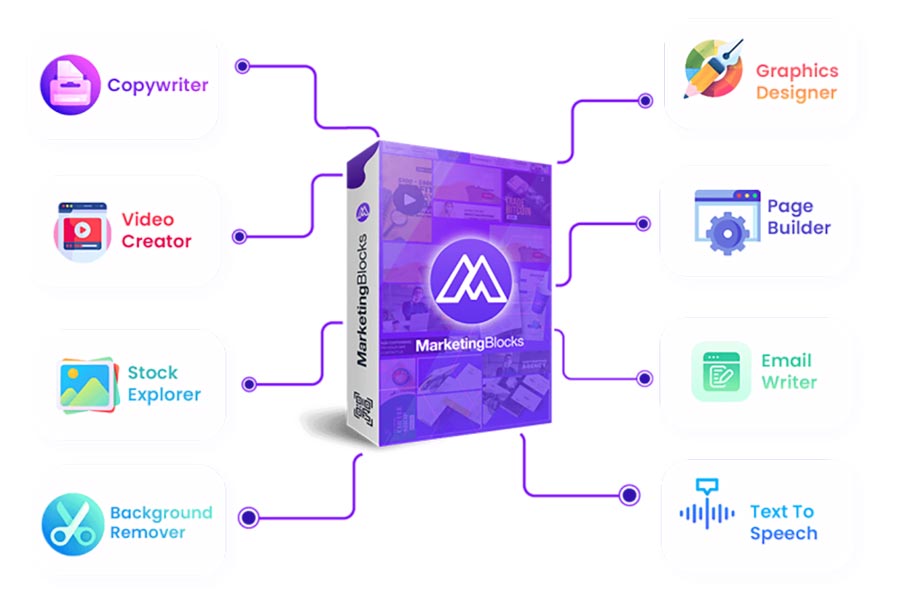Unlocking Personalisation: Guide to Successful Marketing

Introduction
Personalisation in marketing refers to tailoring marketing efforts and messages to meet individual customers’ needs and interests. This includes using data and technology to gather information about a customer’s behaviour, preferences, and interests and using that information to create unique and relevant experiences. Personalised marketing has become a crucial aspect of modern marketing, as it helps companies to stand out in a crowded market and build stronger relationships with their customers.
Personalisation has become increasingly important in recent years due to several key factors. Firstly, customers expect a high level of personalisation from the companies they interact with. Personalisation not only improves the customer experience, but it can also drive sales. A study by Accenture found that personalisation can lead to a 15% increase in sales for retailers.
“76% of consumers expect companies to understand their needs and provide them with personalised experiences.”
— Salesforce
This blog will explore the strategies and best practices for personalisation in marketing. We will discuss the different forms of personalisation, including data-driven personalisation, behaviour-based personalisation, and content-based personalisation. We will also examine the critical challenges in personalisation, including data privacy and security, and how to overcome these challenges. Additionally, we will provide several case studies to illustrate personalisation’s impact on customer engagement and sales. Our objective is to furnish you with an all-encompassing manual on personalisation in marketing and assist you in developing practical and captivating personalisation tactics.
What is Personalisation in Marketing
Definition of Personalisation in Marketing
Personalisation in marketing refers to tailoring marketing efforts and messages to meet individual customers’ needs and interests. This includes using data and technology to gather information about a customer’s behaviour, preferences, and interests and using that information to create unique and relevant experiences. Personalisation can take many forms, including data-driven personalisation, behaviour-based personalisation, and content-based personalisation.

Importance of Personalisation in Marketing
Personalisation has become increasingly crucial for companies looking to stay competitive in today’s crowded market. By providing personalised experiences, companies can stand out from their competitors and build stronger customer relationships. Personalisation has been shown to improve customer engagement, increase customer loyalty, and drive sales. A survey by Epsilon found that personalised emails have an open rate of 29% higher than non-personalised emails and a click-through rate of 41% higher.
How Personalisation Differs from Customisation and Segmentation
The terms “personalisation,” “customisation,” and “segmentation” in marketing often overlap and are sometimes used interchangeably, but they are distinct concepts. Customers can personalise a product or service to fit their needs or desires. Segmentation involves dividing a market into smaller segments of consumers with similar needs or characteristics. Personalisation in marketing, however, goes beyond customisation and segmentation by leveraging data and technology to create individualised and relevant experiences for each customer based on their behaviour, preferences, and interests.
Personalisation in marketing is a crucial aspect of modern marketing. It allows companies to provide unique and relevant customer experiences and improve customer engagement, loyalty, and sales. In the subsequent sections of this piece, we will delve into the tactics and optimal approaches for personalisation in marketing.
Benefits of Personalisation in Marketing
Increased Customer Engagement
Personalisation has been shown to increase customer engagement by making marketing messages and experiences more relevant and appealing to individual customers. By using data and technology to understand a customer’s behaviour, preferences, and interests, companies can create personalised experiences tailored to their needs and motivations. As a result, personalised marketing campaigns have resulted in higher open rates, click-through rates, and conversions compared to non-personalised campaigns.
“90% of consumers find personalisation appealing and are more likely to do business with a company that offers it.”
— Infosys
Improved Customer Experience
Personalisation can enhance the customer experience as well. By offering individualised and pertinent interactions, businesses can differentiate themselves from their competitors and distinguish themselves in a competitive market. Personalised experiences can also evoke a feeling of worth and appreciation among customers, fostering increased customer loyalty and advocacy.
Increased Customer Loyalty
Studies have shown that personalisation boosts customer loyalty by establishing more robust customer connections. By delivering personalised experiences, companies can demonstrate to their customers that they comprehend their requirements and appreciate their patronage. This can result in higher customer satisfaction and repeat purchases.

Better Conversion Rates
Personalisation can also lead to better conversion rates. By using data and technology to understand a customer’s behaviour, preferences, and interests, companies can create personalised experiences more likely to result in a sale. Personalised recommendations, for example, have resulted in a 30% increase in conversion rates compared to non-personalised recommendations.
Increased Sales and Revenue
Finally, personalisation can lead to increased sales and revenue. By improving customer engagement, customer experience, and conversion rates, personalisation can drive significant increases in sales and revenue for companies. For example, a study by Epsilon found that personalised emails result in a conversion rate six times higher than non-personalised emails.
Personalisation in marketing can significantly benefit companies looking to improve customer engagement, experience, loyalty, conversion rates, and sales. Companies can create unique and relevant experiences that drive business results by using data and technology to understand their customers. In the following sections, we will explore the different forms of personalisation in marketing and the strategies and best practices for implementing personalisation in your marketing efforts.
Types of Personalisation in Marketing
Demographic Personalisation
Demographic personalisation involves using demographic data, such as age, gender, and location, to tailor marketing messages and experiences to individual customers. For example, a clothing retailer might use demographic data to send personalised promotions and recommendations to customers based on age, gender, and location.
Behavioural Personalisation
Behavioural personalisation involves using customer behaviour data, such as purchase history and website browsing behaviour, to tailor marketing messages and experiences to individual customers. For example, a retail website might use behavioural personalisation to recommend products based on a customer’s past purchases and website browsing behaviour.
Geolocation Personalisation
Geolocation personalisation involves using location data, such as GPS and IP address, to tailor marketing messages and experiences to individual customers. For example, a restaurant might use geolocation personalisation to send special offers and promotions to nearby customers.
Technographic Personalisation
Technographic personalisation involves using technology data, such as device type and operating system, to tailor marketing messages and experiences to individual customers. For example, a technology company might use technographic personalisation to send targeted promotions and recommendations to customers based on their device type and operating system.
Psychographic Personalisation
Psychographic personalisation involves using psychological data, such as values, personality, and lifestyle, to tailor marketing messages and experiences to individual customers. For example, a travel company might use psychographic personalisation to send targeted promotions and recommendations to customers based on their values, personality, and lifestyle.
Personalisation in Email Marketing
Email marketing personalisation involves using customer data, such as name and purchase history, to tailor email messages and experiences to individual customers. For example, an e-commerce company might use personalisation in email marketing to send customers personalised product recommendations and promotions based on their past purchases.

Personalisation in Social Media Marketing
Personalisation in social media marketing involves using customer data, such as behaviour and interests, to tailor social media messages and experiences to individual customers. For example, a fashion retailer might use personalisation in social media marketing to send targeted promotions and recommendations to customers based on their social media behaviour and interests.
Personalisation in Website Design
Personalisation in website design involves using customer data, such as website behaviour and preferences, to tailor website experiences to individual customers. For example, a consumer electronics company might use personalisation in website design to display products and promotions based on a customer’s website behaviour and preferences.
There are many different forms of personalisation in marketing, each using customer data and technology to tailor marketing messages and experiences to individual customers. By understanding the various forms of personalisation and how they can be used, companies can choose the most effective form of personalisation for their marketing efforts and drive better business results. Next, we will explore the strategies and best practices for implementing personalisation in marketing.
Best Practices for Personalisation in Marketing
Understanding your target audience
Understanding your target audience is the first and most crucial step in personalising your marketing efforts. This involves gathering customer data and insights, including their demographics, behaviour, location, technology, and psychographics. This information will help you create more relevant and effective personalisation strategies that resonate with your customers.
“Personalisation can improve customer lifetime value by 16%.”
— Epsilon
Gaining consent for the personalisation
Another critical best practice in personalisation is gaining customers’ consent before collecting and using their data. This means that customers should know what data they are collecting and how it will be used for personalisation. Gaining consent for personalisation will help you build trust with your customers and avoid legal or privacy issues.
Ensuring personalisation is relevant
Personalisation should always be relevant to the customer and add value to their experience. You should only use customer data to create personalised experiences relevant to their interests and needs. For example, sending a personalised promotion for a product a customer has never shown interest in is irrelevant and will not add value to their experience.
Measuring the success of personalisation efforts
It’s vital to measure the success of your personalisation efforts to understand what’s working and what’s not. This involves tracking key metrics, such as engagement, conversion rates, and customer loyalty, and comparing these metrics before and after personalisation. By continuously measuring the success of your personalisation efforts, you can make data-driven decisions to improve your personalisation strategies.
Continuously testing and improving personalisation strategies
Continuous testing and improvement of personalisation strategies are crucial to success. This requires experimenting with different tactics and evaluating their impacts, such as conducting various personalisation email campaigns or website experiences. By doing so, companies can determine the most effective approach and maintain a competitive edge by consistently delivering outstanding customer experiences.
Personalising your marketing approach is a multi-faceted endeavour that requires thoroughly comprehending your target audience, smart utilisation of customer information, and consistent testing and refinement. Adhering to these best practices can help you develop a more successful personalisation strategy that leads to improved business outcomes and heightened customer satisfaction.
Challenges in Personalisation in Marketing
Ensuring the privacy and security of customer data
One of the biggest challenges in personalisation is ensuring the privacy and security of customer data. With data breaches and privacy concerns becoming increasingly common, taking the necessary steps to protect your customers’ personal information is essential. This includes implementing robust security protocols, regularly reviewing your privacy policies, and only collecting and storing the data you need for personalisation.
Balancing personalisation and privacy concerns
Another challenge in personalisation is balancing the benefits of personalisation with customer privacy concerns. Personalisation relies on collecting and using customer data, which can raise privacy concerns. To address this challenge, being transparent with your customers about what data you’re collecting and how it’s being used is essential. Additionally, it would help if you considered implementing opt-in options for personalisation, so customers have control over their data and can choose to share it.
Overcoming resistance to personalisation
Some customers may resist personalisation due to privacy concerns or dislike using their data for marketing. To overcome this resistance, you must educate your customers about the benefits of personalisation and how their data will be used. You should also ensure that personalisation adds value to their experience and is relevant to their needs.
Avoiding the potential for discrimination or bias
Personalisation algorithms can sometimes introduce bias or discrimination into the marketing process. For example, a personalisation algorithm may suggest products or services to a specific demographic based on past behaviour, which could result in discriminatory outcomes. To avoid this potential pitfall, it’s essential to regularly review your personalisation algorithms to ensure they’re free of bias or discrimination.
Ensuring personalisation remains practical and relevant over time
Personalisation must remain adequate and relevant over time to maintain its benefits. This requires continuous improvement and updating your personalisation strategies and algorithms to keep up with customer behaviour and preferences changes. Additionally, it’s crucial to regularly gather customer feedback to understand how personalisation impacts their experience and make adjustments as needed.
Personalisation can benefit your marketing efforts but presents many challenges. However, by being aware of and overcoming these challenges, you can create a successful personalisation strategy that balances privacy concerns, avoids discrimination and bias, and remains adequate and relevant.
Conclusion
Personalisation has become an increasingly important aspect of marketing in recent years, offering numerous benefits, including increased customer engagement, improved customer experience, increased customer loyalty, and better conversion rates. By understanding and utilising the different types of personalisation, businesses can create targeted and effective marketing strategies that meet their customers’ unique needs and preferences.
When implementing personalisation in your marketing strategy, it’s essential to understand your target audience, gain consent for personalisation, ensure personalisation is relevant, and measure the success of your efforts. Additionally, it’s crucial to overcome challenges such as providing privacy and security of customer data, balancing personalisation with privacy concerns, overcoming resistance to personalisation, avoiding the potential for discrimination or bias, and ensuring personalisation remains adequate and relevant over time.
In conclusion, personalisation is an effective way for businesses to improve their marketing efforts and better connect with customers. By taking a strategic and customer-focused approach, companies can successfully implement personalisation in their marketing strategy and reap the benefits of increased engagement, loyalty, and revenue. To get started, it’s essential to research and understand the different types of personalisation, develop a plan for data collection and management, and continuously test and improve your personalisation strategies.
Be sure to check out our other related posts if you enjoyed this one:
- Supercharge Your Business: Mastering Cross-Channel Marketing Magic!
- Influence: The Psychology of Persuasion by Robert B. Cialdini – A Word Marketing Book Summary
- Building Trust: Brand Awareness & Reputation
- Unlocking Success: Data-Driven Targeted Advertising
- The AI Revolution: Transforming Marketing & Advertising
- Introducing Our New and Improved Dewalist Marketplace Design
- Ad Ethics: Balancing Persuasion with Responsibility
- Email Showdown: Mandrill vs Mailchimp Features
- The Future of Digital Out-of-Home (DOOH) Advertising
- Revolutionising Marketing with Virtual & Augmented Reality
Sign up for updates on this blog and our latest marketing posts if you enjoyed reading this one.
Share our blog content with your friends and colleagues via Facebook, Twitter, Pinterest, LinkedIn, email or WhatsApp links below and help them stay informed about the latest insights on business, marketing, finance, lifestyle, and society. Let’s build a knowledge-sharing community and empower each other to achieve our goals.
Credits
- Featured image by DCStudio on Freepik.
- Personalisation marketing definition photo by Alexander Grey from Pexels.
- Personalisation marketing benefit photo by Arina Krasnikova from Pexels.
- Personalisation marketing type image by RawPixel.com on Freepik.








